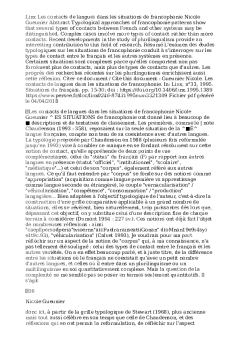Yakovliuk k article General overview on the development of linguistic innovations in terminology based on the conceptual distinction between Semasiology and Onomasiology Khrystyna Yakovliuk Ivano-Frankivsk National Technical University of Oil and Gas Ivan
General overview on the development of linguistic innovations in terminology based on the conceptual distinction between Semasiology and Onomasiology Khrystyna Yakovliuk Ivano-Frankivsk National Technical University of Oil and Gas Ivano-Frankivsk Ukraine Corresponding author E-mail khristy yakovlyuk gmail com Annotation This article explores new words in terms of the di ?erence between semasiology and onomasiology that is the terminological distinction between looking at words only and looking at the sense relations that exist between words The basic aim was to ?nd out the most important sources and ways of shaping and introducing of new words in public life to identify the role of new words in the language and their functions in modern English as well as their etymology history sound-structure and some formal properties of English word-formation rules Keywords lexical innovations semasiology onomasilogy terminology standards conceptual category concept Introduction New words show the ability of language to re ect the dynamic development of society and at the same time the extension of traditional boundaries of word formation New words are added to the lexical inventory of a language because some speakers introduce them and others imitate these speakers similarly words change their value within the language because people start using them in di ?erent circumstances Choosing an expression can in fact take the form of selecting an option that is already there or of creating a new alternative on the basis of one of the mechanisms The new lexical unit undergoes several stages of socialization acceptance in society and lexicalization ?xation in language Then it is ?xed in print The purpose of the study The purpose of this study is to classify linguistic innovations that re ect new technological ideas provide a scienti ?c linguistic description and analysis of innovations their methods of creation di ?erentiation and features of their use We have investigated these from the onomasiological and semasiological perspectives To achieve this goal we provide the main criterion for the selection of new words that is their usage investigate the peculiarities of the functions and occurrence of new words in various ?elds of human activity and analyze the most common areas of new words Method and materials There are such types of methodological approaches in the study of linguistic innovations quantitative methods e g surveys qualitative methods e g grounded theory and mixed methods e g combination of numerical measurement and in-depth exploration Quantitative and qualitative research use di ?erent methods of data collection and analysis and they allow us to answer di ?erent kinds of research questions The qualitative methods are used to understand concepts thoughts or experiences This type of research enables to gather in-depth insights on topics that are not well understood Because of it we used techniques such as focus groups case studies discourse analysis Retrieved from https www scribbr com dissertation methodology The results of qualitative research are descriptive or explanatory rather than predictive and are typically time-consuming to collect and analyse The following tools were used to con ?rm these tasks Participant
Documents similaires










-
40
-
0
-
0
Licence et utilisation
Gratuit pour un usage personnel Aucune attribution requise- Détails
- Publié le Dec 06, 2021
- Catégorie Philosophy / Philo...
- Langue French
- Taille du fichier 60.7kB


